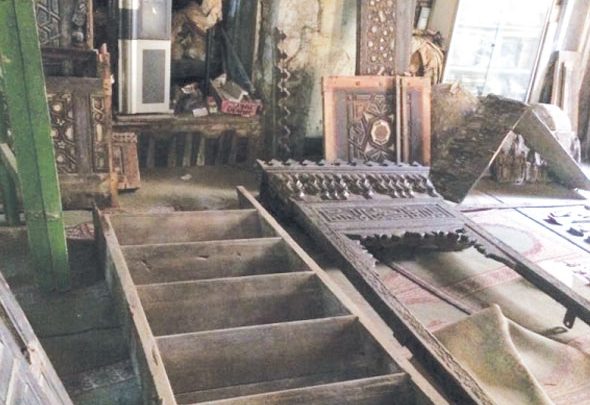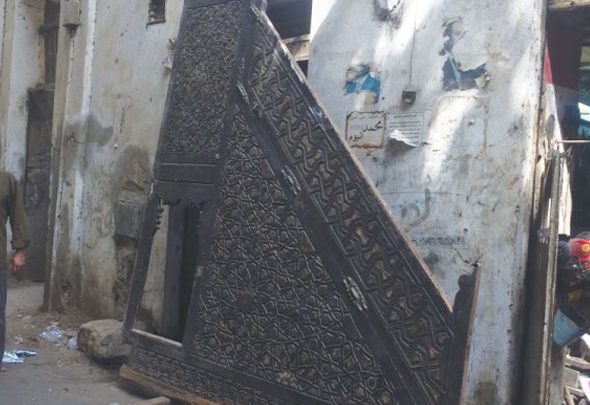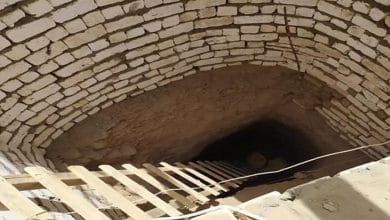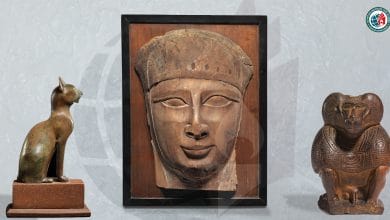Will Cairo’s historical mosques remain without pulpits?
Will Cairo’s historical mosques remain without pulpits?
On April 18, 2018, the Ministry of Antiquities surprised Egyptians with the transfer of a Mameluke “minbar” (pulpit) from the Abu Bakr Al-Muzhir Mosque, in the Gammaliya district of Cairo, to the National Museum of Egyptian Civilisation (NMEC). This step was taken after a decision was issued by the Egyptian Prime Minister (No. 110 on February 20, 2018) in this regard. The decision allows the transfer of some 55 archaeological pulpits from Cairo’s historical mosques to the warehouses of the NMEC, which is due to open at the end of this year. The decision also approves the transfer of 60 other artefacts, including lanterns, chairs of reciters and chandeliers from over 58 historical mosques in Cairo – a step which was describe by some observers as “irreparable damage and the obliteration of the mosques’ artistic value”.
On April 21, 2018, Mostafa Waziri, the secretary general of the Ministry of Antiquities, denied issuance of such a decision, saying, “What has recently been circulated in the media about the Ministry of Antiquities’ intention to transfer 55 archaeological pulpits from mosques to its museums warehouses, is incorrect”. However, the aforementioned decision was clear and precise to the extent that it set a timetable for the process, stating that: the transfer of 19 lanterns should be completed by the end of April 2018, the transfer of 15 chairs of reciters should be completed by the end of May 2018, the registration of 13 chandeliers must be finished by the end of June, provided that they should be transferred to the warehouses by the end of August. Also according to the decision, registration of some 55 pulpits should be completed by the end of August, provided that all the pieces must be documented, disassembled, and transferred by the end of 2018.
What raises suspicions around this resolution is that – in its second article – it bans announcement of the transfer process, stating that this issue must not be uncovered. We wonder why the Council of Ministers does not want to announce such an issue as long as it is a sound procedure.
The Ministry argues that it attempts to protect these antiquities against theft. On April 20, 2018, Al-Ahram quoted Dr. Abu Bakr Abdullah, the Ministry’s Technical Office director and supervisor of the Cairo archaeological areas, as saying: “(Ancient) Mosques have become a disaster for us. We expect that there will be theft cases on a daily basis; yet we will not be able to provide guards for each mosque.”
In fact, over fifteen years, some 17 of Cairo’s historical mosques have been exposed to thefts (between small parts and other important parts). On January 4, 2017, six ancient lanterns were stolen from the Al-Rifai Mosque in Cairo while filming cinema shots, albeit the ministry announced three weeks later that it had returned the stolen lanterns. Following these incidents, the Permanent Committee for the Islamic and Coptic Monuments decided early 2017 to register and document all vulnerable Islamic monuments.
We should ask here: How will the ministry fill the vacuum left by the process of transferring the contents of these mosques? Will they wait until they receive the required amounts of money for buying or manufacturing other modern alternatives, according to the text of the resolution? And will the Ministry of Antiquities be able to reassemble these pulpits and artefacts?! The reality confirms that it is impossible to restore these disassembled pieces to their previous state.
The Abu Bakr Al-Muzhir Mosque is located in the Bergwan Alley in the Gammaliya district of Islamic Cairo and is hidden under scaffolding erected to consolidate its walls in the aftermath of the 1992 earthquake. The mosque was built by Abu Bakr Al-Muzhir, who was head of the diwan (government) during the reign of the Mameluke Sultan Al-Ashraf Abul-Nasr Qaytbay. The mosque was built in 1480 CE and has a rectangular shaped “school” with a wooden ceiling and a wooden dome with holes. It has four vaulted halls with marble floors decorated with geometric painted elements. It also has two façades and a unique wooden pulpit, gates and cupboards. At the end of the qibla prayer hall, there is a water fountain. “The minbar (minaret) is unique and is the only Mameluke “minbar” that still exists with all its architectural and decorative elements,” Mohamed Abdel-Aziz said, the supervisor of the Historical Cairo Conservation Project.
Even if it suspended this wrong decision, as it says – which is unlikely – the government must be held accountable for the disassembling of the pulpit of Abu Bakr Al-Muzhir Mosque, as this pulpit had been in an excellent state. The Abu Bakr Al-Muzhir Mosque is one of the most beautiful mosques in the Mameluke era. The pulpit is considered a masterpiece due to its pithy, beautiful, and highly precise wooden works; and it is also characterized by its big size and the precision of its manufacture. Also, the mosque in general is considered a building masterpiece, especially in the use of wooden ceilings, and marble pillars. Also, the name of the person who carried out these works, decorations, and engravings is still inscribed next to them.
The ministry should have worked out alternative plans to benefit from these rare monuments in tourist promotion; such as development of new tourist routes, including these archaeological mosques, as it happens in other world countries which do not have such treasures.
Among the practical solutions to prevent theft of these artefacts is to transfer affiliation of Islamic and Coptic antiquities from the Ministry of Waqfs and the Coptic Church to the Ministry of Antiquities, like all the listed monuments in the country.







